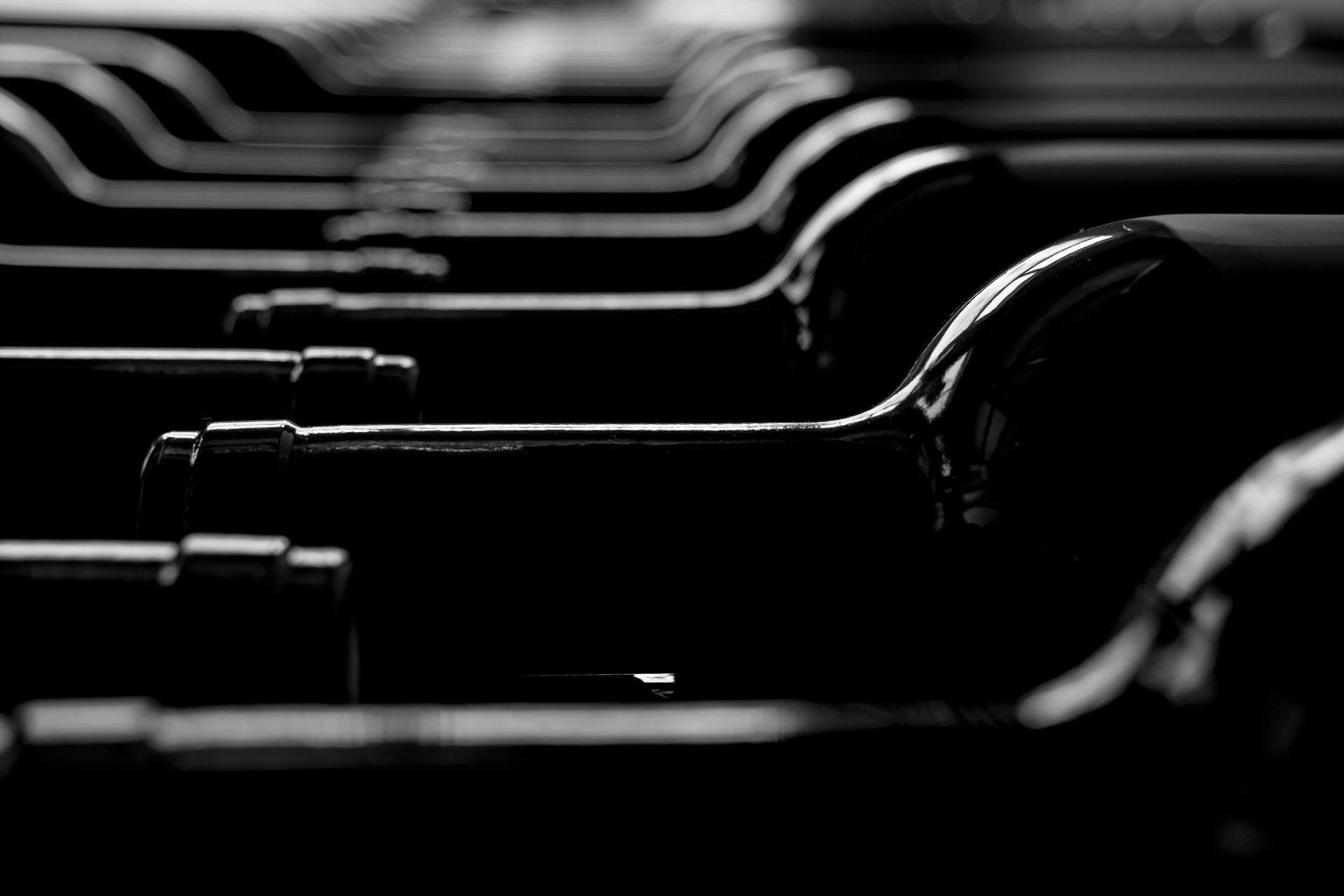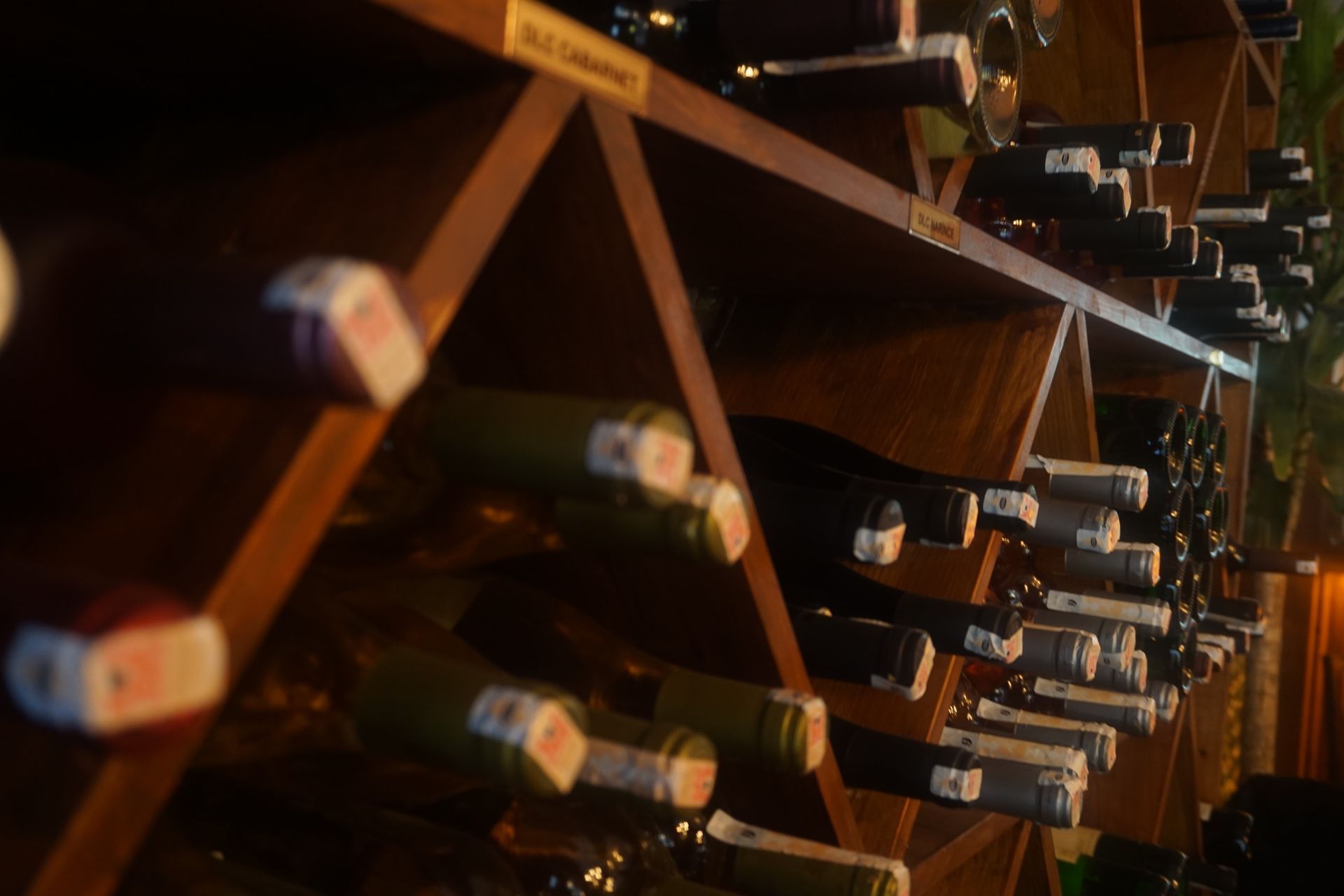The comprehensive guide to home wine cellars

For many, the home is an extension of personalities and sensibilities: how a home is decorated, how the furniture is arranged, the things that are chosen to be put on display – these are all ways of expressing ourselves and making the space our own.
Presenting houses in this way allows us to exhibit our passions – and in a country like Aotearoa, with its rich history of viticulture and internationally renowned grapes, it’s only natural that Kiwi oenophiles take part in this by proudly displaying their wine collection at their home.
Of course, there are many different ways to do this, from the humble wine fridge to more intricate, purpose-built rooms dedicated to wine preservation. Though the different methods of storing and displaying wine are often separated by budget and space limitations, Marek Przyborek, the sommelier at Amisfield Winery, says each wine storage solution should share three core tenets: they should keep a constant temperature, they should let in no direct sunlight, and they should ensure a horizontal position for wines with natural corks, to keep the corks in good condition.
To explore the variations in home wine storage solutions, ArchiPro sat down with Marek to discuss the different options, broken down into three different pricepoints: a midrange solution, a higher-end, dedicated wine cellar, and a top-of-the-line solution that utilises the best in wine storage technology.

Pricepoint One: A simple space that remains a consistent temperature
Solutions at this pricepoint are ideal for wine lovers who don't want to spend huge money on storage, but still want a space for their collection. For those who are determined to have a place to store their wine but not the budget to do it with, there are ways to do it, Marek says.
“The crucial part is to find the right spot for keeping your wines safe,” says Marek. “It really depends on where you live – and of course, the size of your wine collection!”
He recommends finding a spot with no direct sunlight and fairly consistent temperature – erring on the cooler side rather than warmer. While not perfectly ideal, even a built-in closet or a below-staircase storage space would work.
“Keeping your wines at around 18ºC at this pricepoint is the sweet spot,” he says. “Any higher than 30ºC can be a problem – risking the danger of the wine being ‘cooked off’ or ‘maderised’, which can change its aromas and flavours. Your wine would lose its bright fruit characteristics and get flabby molasses-like and Christmas pudding tones.
“Maderisation is quite a serious wine fault – equally as bad as oxidation and cork taint, so it’s important to keep temperature in check.”
Speaking of corks, when it comes to rudimentary home storage, it’s important to place the wine bottles correctly. If they have a natural cork, they must be placed horizontally. This keeps the cork in the right condition and helps avoid the ingress of oxygen. Meanwhile, an upright position is better for wines closed with glass closures and screw caps.
“While it’s easy to keep wines in standing position, getting your bottles horizontal can be a bit trickier,” says Marek. “You can either create your own wine racks or buy some of them. There are various styles and producers available online – with a price range between $100 and $200. You can sometimes find some of those in the charity shops!”
Finally, there’s the subject of humidity. Some homes, especially further north, may experience higher humidity levels indoors, which can especially impact the condition of wine labels. In this case, Marek suggest wrapping the bottles in simple cling film – but only if you’re not displaying them, of course.

Pricepoint Two: Purpose-built wine storage tech that manages humidity and temperature
This category is for those willing to spend a bit more to properly regulate the temperature and humidity of the space without going completely top-shelf.
This calls for a purpose-built wine fridge system, which is a marked step up from simple wine racks stored in a cool, dark place. There is a variety of models available on the market, with prices somewhere between $500 and $2000 depending on size. Some models can be set with two different temperatures – for white and red wines.
The higher-end models typically require a lot more space, but more economical ones can be installed in a variety of convenient places – such as a living room or open kitchen. Some models can be even installed under a kitchen bench, even with direct sunlight, as many fridge models fridges have dark glass windows to protect against UV.
Wine fridge plays also important role in displaying your wine selection, Marek says.
“Wooden racks located somewhere under the stairs are a convenient place to store your bottles, but you can rarely see them or show them to your guests,” he says. “You can really take your wine collection to the next level by displaying them in dedicated wine fridges in your kitchen or even in the living room.”
When investing into this pricepoint, wine lovers may run into issues when expanding their collection. Diversifying wines across different collections can help with this, Marek says – grouping them into display bottles and storage bottles can make overall storage more efficient.
“In your annual cases you’d be provided with current vintages of your favourite Pinot Noir – you might like to drink some bottles relatively early, and keep others for later,” says Marek. “Keeping them in separate spots in your house can be crucial in building your cellar.”
With the expansion of your wine selection you might start thinking of investing in wine. There are some specialised auctions where you can buy and sell some of your wines to make space for new bottles.
Pricepoint Three: The works – the best in home wine storage equipment
This category is for those who want the very best, no matter the cost.
Marek says the state of art cellaring systems are generally divided into two categories.
“Firstly there are producer-made top shelf systems,” he explains. “This includes walk-in cabinets made by specialised producers that can hold anywhere between 600 and 4000 bottles, like the Vintec Espace series. These are typically equipped with wooden racks, full temperature and humidity control, and UV protective glass.”
Not all of these products are immediately available in New Zealand, however. Some can be bought from specialised stores across the country, but others can be harder to acquire. Models that can hold 1,000 bottles can cost up to $30,000.
“The second category is a custom-built wine cellar,” says Marek. “Since it’s bespoke, it’s much easier to adapt to the interior design and colours than standard black cellaring units. These types of rigs are also usually able to store large collections of a few thousand bottles.”
There are some companies on the market offering full design and installation of those home cellars, like Wine Stash. And some of the higher-end ones, Marek says, can surpass even the level of cellars in restaurants in New Zealand.
“Most restaurant cellars are designed as working cellars – they need to be functional in a very specific environment. But a custom-made home cellar has a lot more freedom to be exactly what a client wants.”
With bespoke cellars housing large and valuable collections, Marek says it’s worth it to invest in a cellar management system – dedicated software that can help to gather information about the wines and cellar. You can use an app, for example, to keep track of bottles that are ready to open, and bottles that need to age longer.
“This sort of thing can also help you locate a particular bottle in the cellar much quicker without need of using hand-written tags on the bottle necks. It can also remind you to re-cork some of your most precious wines.”
And at this pricepoint, this kind of technology can be quite valuable — especially when it oversees an especially extensive and precious collection.
